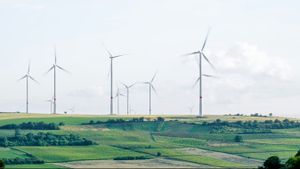JAKARTA - Short and stiff football athletes like Lionel Messi may lose in speed to athletes who are taller and slimmer like Erling Haaland in the future due to climate change.
Meanwhile, high tennis players like Andy Murray might be better off in a sports contest when the temperature is hotter.
A recent study researching the performance of professional triathlon athletes found that higher men with longer limbs, were faster when temperatures were higher.
Meanwhile, shorter and muscular men perform better when the temperature is cooler. The study concluded that animals-like humans tend to be more muscular in cooler areas such as polar bears and slimmer like brown bears in hotter areas may be because this is more suitable for conditions.
The analysis was carried out on 173 athletes who competed in nearly 200 extreme Ironman triathlons for two decades.
It is found that men who are tall and lean are about 2.5 percent faster when temperatures are higher than men who are short and stiff. This may be because their body surface area is bigger so they can absorb heat from more parts of the skin and sweat more to cool the body.
It was also found that women run faster at hotter temperatures when they have longer legs, although not significant.
This may be because women produce less sweat than men, so having longer legs to sweat in the hot weather doesn't really matter.
This study only found differences in ultra-runner performance, but professor Ryan Calsbeek of Dartmouth University in the US said the results could apply to other sports.
This means, in a summer football tournament that is getting hotter, high and streamy footballers like Manchester City star Erling Haaland, may be better than short and stiff players like Wayne Rooney or Lionel Messi.
A 2019 study led by Portsmouth University, which saw footballers from 1973 to 2014, found that football players are currently getting higher and slimmer.
This shows that the muscles and strength of players like Alan Shearer is replaced by slimmer physicals such as players like Harry Kane and Marcus Rashford.
Athletes themselves can choose a venue based on their sporting location and average temperature to try to hit their personal record, according to professor Calsbeek in his latest study published in the journal PLOS One.
"The results of this study suggest that sleek tennis players like Andy Murray may be better off at a warmer US Open than at Wimbledon, or a cyclist like Chris Froome might be successful if he wants to try marathons in warm countries," Calsbeek said., as quoted by the Daily Mail.
The study includes a nearly 150-mile triathlon race at very hot locations such as Hawaii and South Africa, as well as cooler countries such as Finland and Canada.
The peak temperature ranges from less than 18$C (64$F) to nearly 39$C (102$F).
The study compares athletes' height and leg length as well as their digitally measured arms from race photos.
Men are shown to run faster when temperatures are higher, but not in cycling, which may be less affected by temperatures due to airflow, or in swimming, involving the use of warm wetsuits even when the weather is cold.
The results of this study support the theory by 19th-century biologists Carl Bergmann and Joel Smoker Allen, that the overall body size of the animals, including the length and thickness of their limbs, is related to the climate in their environment.
The theory has also been linked to the fact that Inuit people are smaller and denser than Europeans.
Professor Calsbeek, who was once an Ironman participant, was inspired to do this research after seeing that the winner of the Norseman triathlon three times, Allan Hovda, has a solid and short posture.
"I want to know if there is anything about his body shape that makes it better to excel in cold weather, and think about the role of temperature for people who don't look like athletes with standard durability," said Calsbeek.
One explanation for Bergmann's rules is that larger animals have a lower surface-to-volume ratio than smaller animals, so they emit less body heat and stay warmer in the cold climate.
A study published last year found that megalodon - an extinct shark species - grew bigger in colder waters.
The researchers found that the extinct creature grew to a larger size in a relatively cooler environment, such as North Carolina and Peru, than in warmer areas, such as Florida and Panama.
The English, Chinese, Japanese, Arabic, and French versions are automatically generated by the AI. So there may still be inaccuracies in translating, please always see Indonesian as our main language. (system supported by DigitalSiber.id)













